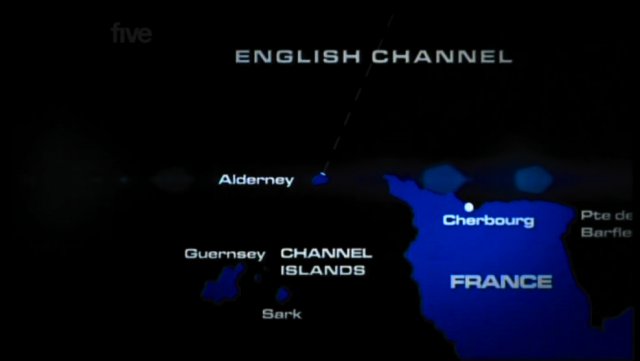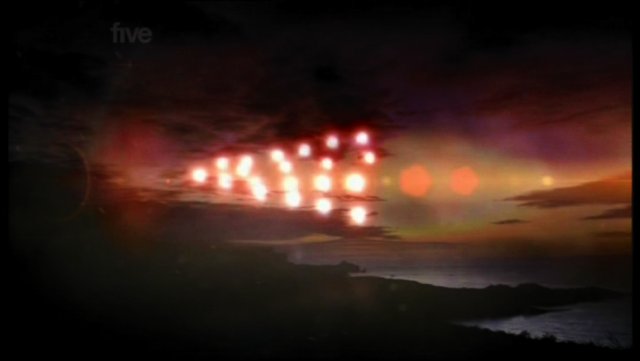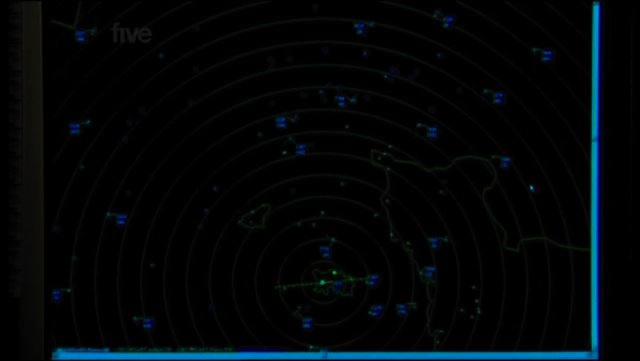|
In June and July, the UK network television
broadcaster, Channel 5, aired a four-part series entitled Britain’s Closest Encounters. Produced by Firefly Film and
Television Productions, the series was narrated by Anthony Head and
featured UFO eyewitnesses and experts from all around the United
Kingdom.
The first episode focussed upon the notorious Berwyn Mountains Incident
from 1974. During the evening of January 23rd, 1974, the
town of Landrillo in North Wales was shaken by an earthquake. In
nearby Corwen, Sergeant Elfed Roberts (who would go on to become the
Assistant Chief Constable of North Wales Police) feared that the dam
at nearby Bala had breached and rushed to investigate. Satisfied
that the dam was secure, he headed for Bala Police Station, where
the phones were ringing almost constantly. Reports were coming in
from the residents of Landrillo about lights in the sky. A ‘ball of
fire with a tail’ was seen coming down over the mountains close to
the village.
Sergeant Roberts and a colleague headed out to
Landrillo and witnessed an arcing, green light, with blue edges, in
the sky, unlike anything Roberts had seen before. When they arrived
in the village, the locals told of what they had seen. Fearful that
an aircraft might have crashed, the policemen began searching the
area. Commandeering a local farmer’s Land Rover, they headed up the
mountain, sweeping the area with their torches. Then they decided to
switch off the flashlights and waited quietly to see if anything
unusual could be seen or heard.
A few miles away, local nurse, Pat Evans, also
feared a plane had crashed and set off with her daughters to see if
anybody required medical assistance. She described seeing a
circular, red light with other lights moving around it. Meanwhile,
Sergeant Roberts’ search proved fruitless.
The next day, the media descended upon Landrillo,
curious about the strange story coming from the village. Astronomer,
Dr Ron Maddison arrived with colleagues and began searching for what
he suspected was a meteorite coming down in the mountains. No
evidence was ever found of a plane crash or a meteorite impact. The
mystery persisted.
The British Geological Survey had measured an
earthquake in the area with a magnitude of 3.5 on the Richter Scale.
So, that explained the rumbling, but what about the lights in the
sky? The Royal Astronomical Society explained that a meteor shower
had been visible that night and they had received reports from all
over the country about particularly bright meteors.
The case was forgotten for about fifteen years,
until Pat Evans spoke to Jenny Randles about what she had seen. Her
story reignited the mystery. Investigators once again descended upon
the area and, eventually, Nurse Evans became so fatigued with the
attention that she moved abroad.
Three weeks after the earthquake, local gamekeeper,
Geraint Edwards, witnessed something on the mountain that remained
in his memory ever since. He described a red object, shaped like a
rugby ball, but with more pointed ends, hovering sixty to a hundred
feet over Pen-Y-Bryn. As he and his friends watched, it took off at
high speed over the mountains.
For some bizarre reason (and this happened in every
episode), the programme whisked us away from Berwyn and across the
country to Derbyshire to check out another case.
In October, 2000, Sharon Rowlands saw something over
Bonsall and captured it with her camcorder. She said that what she
saw was a segmented disc with a dark centre that was as large as ‘a
detached house’. She became very nervous when she feared that the
object would land in the field close to her house. As she recorded
the event, the object blinked out. When her story appeared in the
local paper, UFO investigators from all over the world began
contacting her. She decided to place the video tape in a vault at
her solicitor’s.
Video expert, Peter Marriot, came to the conclusion
that what Sharon had recorded was simply a street lamp. Sharon
discounts this explanation, saying that what she saw was not a
streetlight and was like nothing she had ever seen. Judging from the
clip shown in this episode, just before it blinks out, there appear
to be two steady lights with flashing lights accompanying them.
Frankly, that looks like a conventional aircraft to me. Sorry,
Sharon.
Jenny Randles explains that out of over ten thousand
cases she has looked at over thirty years, ninety-five percent can
be explained as IFOs, Identified Flying Objects. Aircraft, balloons,
Chinese lanterns, meteors etc. fall into this category of
misidentification. We are then told how Chinese lanterns have
sparked a UFO wave over the UK in recent years. Andy Roberts agrees,
saying that the general public are somewhat ignorant of what is in
the skies above their heads and that he has seen several things that
he cannot explain.
Back to Berwyn, sceptics such as Andy Roberts
claimed that what Pat Evans saw was people on the mountain across
the valley. These, according to Andy, were the police and farmers
meeting a group of poachers. One of the poachers in question, Ieuan
Roberts, is doubtful that the lights they used that night could be
mistaken for anything else. He said that Pat could not have seen
their lights that night.
Could so-called earthlights have been what people
witnessed that night? Jenny Randles believes that this is a
possibility. Earthlights are caused by tectonic stresses grinding
together rocks and releasing piezoelectric energy into the sky in
the form of plasma.
The programme then moved on to the alleged cover-up
regarding the Berwyn Mountains Incident. Huw Lloyd, son of the
farmer whose Land Rover was borrowed by Sergeant Roberts, believes
that a cover-up did, in fact, take place. Nick Pope doesn’t think
so. Reports of what the programme called Men-In-Black interviewing
witnesses in Landrillo (although none of those interviewed described
them as such on camera) were, according to Dr Roger Musson of the
British Geological Survey, seismologists sent to check out the
earthquake reports
Locals reported that army personnel arrived and
deployed on the mountain, apparently searching for something. A
Landrillo fireman said that the area became a virtual no-go area for
a while. Andy Roberts explained sagely that what they saw was a
three-man team from RAF Valley and this trio was mistaken for a
‘huge military presence searching for a crashed UFO’.
Local newspapers reported that army vehicles had
been seen with soldiers loading large, black boxes. Then in 1996, a
former soldier, going under the pseudonym of James Prescott, claimed
in UFO Magazine that he
had been part of a unit that had extracted the bodies of two dead
aliens from the mountain and whisked them off to Porton Down. Elfed
Roberts and Andy Roberts doubt that this story is true, citing
technical and operational difficulties in getting vehicles up and
down the mountain. Andy suggested that a helicopter would have been
used rather than trucks. Nick Pope agreed, saying that he never
heard a whiff of UFOs or aliens being connected with the Incident.
The programme solved nothing about the Berwyn
Mountains Incident and believers (i.e. the people who saw what
happened that night and shortly afterwards) and sceptics remain at
loggerheads about the case. To quote a popular member of the UFO
DATA forum: “Next!”
The next episode stayed in Wales and cast a critical
eye over the infamous Broad
Haven Triangle. Broad Haven is a coastal town in Pembrokeshire,
South Wales and in 1977 became the global focus for UFO researchers.
On February 4th, 1977, young David Davies
was playing with his friends when they noticed something in the
field behind their school. He said that a silver, cigar-shaped
object, about the size of a bus, ‘popped-up’ from behind the trees
and appeared as though it was trying to take-off. It paused for a
few seconds and then dropped back down behind the trees. The kids
ran inside and told of what they had seen. Their head teacher sat
them down and asked them to draw what it was that they had
witnessed.
Hugh Turnbull, a reporter for the Western Telegraph went to
the school and asked David Davies to show him where they had seen
the object. Hugh and David could find no tracks in the field to
suggest a vehicle had been there and David noted that a telegraph
pole cross-member had been dislodged and was at about forty-five
degrees.
Liz Philpott, an administrator at the school,
thought that what the children might have seen was a tanker truck
from the nearby sewage works. Speaking to an employee of the works
soon discounted that theory. She was told that a tanker truck could
not get into the field in question.
Hugh ran the story and the school became the focus
of worldwide attention.
That was not the end of the story, however. A few
miles away, in the village of Herbrandston, Maureen Dytor was taking
in some fresh air one night when she saw a ‘cylindrical object with
lights’ zip across the sky in seconds. In Little Haven, Dorothy Cale
was in a car one evening as a passenger. She described a series of
very bright flashes that lit up the whole village. The driver hit
the brakes when they saw a very bright light that appeared to have a
glass dome. As they watched silently, the object flashed and
vanished.
Astronomer Ian Ridpath glibly suggested that what
was seen could have been a bright star or a planet.
Stephen Bamford and Robert Best saw a segmented,
orange object, moving from ‘right to left’ one evening. They set out
and drove towards it, in the hope of finding out what it was. As
they watched, the object collapsed in on itself and disappeared.
They discounted ideas such as the Moon or ships at sea and are still
baffled by what they saw.
Professor Chris French admitted that multiple
witness sightings should be taken more seriously than those where
only a single person saw something. He added, though, that when
people see things, they talk about them and stories can become
interlaced.
The police and newspapers continued to receive
reports from the area between Broad Haven, Milford Haven and
Haverfordwest and a bone fide flap had begun. Dr David Clarke
explained about flaps, citing the UK’s first one at Warminster, in
Wiltshire.
The Warminster events began on Christmas Day in
1964. John Rimmer, editor of
Magonia magazine, told us about strange hammerings, shakings and
mechanical noises going overhead. By May 1965, sightings of lights
over Warminster had begun and famed researcher, Arthur Shuttlewood,
gave the world ‘The Warminster Thing’. Following Shuttlewood’s
newspaper reports, dozens of skywatchers would spend each evening on
the hills around Warminster hoping to catch a glimpse of something.
Kevin Goodman was one of those skywatchers and
described the community spirit that arose during the long, dark
hours of observations. He told of how he saw four red lights, spaced
evenly apart, crossed the landscape before the lead object shot
upwards at tremendous speed. It then made a ninety-degree turn and
shot out of sight. About thirty seconds later the remaining three
lights shot straight up into the sky.
Warminster is surrounded by military facilities of
all kinds and the locals are familiar with the armed forces going
about their business. Were aliens interested in these bases or were
people seeing military activity from these various installations?
RAF Brawdy lies close to Broad Haven. Squadron
Leader Tony Cowan explained that activity from the base could have
explained some of the sightings in South Wales. Dorothy Cale said
that what she witnessed was definitely not anything from the Brawdy
airfield. She was quite used to seeing activity from the base.
Squadron Leader Cowan admitted that there were some reports that
remain a mystery.
Former RAF engineer, Gordon Bowden, explained that
while regular aircraft activity can be misidentified as something
mysterious, he has personally seen something that he cannot explain.
On two occasions, he saw lights out to sea that accelerated with
‘impossible’ speed. He said that he knew of no aircraft at the time
that could change direction so rapidly without killing the pilots.
Close to RAF Brawdy was a top secret facility that
was once operated by the US Navy.
Mentioning the Americans gave us the chance to look
at the Lakenheath Incident from 1956. US personnel at RAF Lakenheath
and RAF Bentwaters saw something strange on their radar screens.
Fighters were scrambled to intercept. David Clarke continued the
story of how RAF Neatishead also picked up the unknown contacts.
Numerous fighters were sent out and two gave chase, but failed to
intercept or identify the objects. Dr Clarke admitted that the case
has never been explained.
Anyway, back to Broad Haven and the top secret US
Navy facility. When the base was decommissioned, it was revealed
that it had simply been monitoring Soviet submarine activity and
housed only computers and stuff. Mystery solved, then. Well, not
really, because strange things were still happening.
Dozens of reports of silver-suited figures landed on
the desk of local bobby, Ernest Jones. One in particular made the
headlines. It came from the Coombs family at Ripperston Farm. The
Coombs’ story has become infamous and they no longer wish to discuss
what happened to them thirty years ago. Ernest, though, picked up
the story from his perspective. He received a call from them and
went out to the farm. He was told that a silvery figure had been
seen close to the window and it had terrified the family to such a
degree that the policeman made arrangements for them to spend the
night elsewhere.
David Clarke found that the Ministry of Defence
(MoD) had found the reports from Broad Haven intriguing and they had
made discreet enquiries into the events there. They came to the
conclusion that ‘a local prankster’ was behind some of the events,
particularly the silver-suited figure.
Glyn Edwards, a businessman from Milford Haven,
owned up to being the culprit. He had cobbled together a silver
spacesuit for a fancy dress dinner and decided to lurch about the
village, scaring any local people that stumbled across him. He
denied ever visiting Ripperston Farm, however.
As with all flaps, the sightings diminished and the
press moved on, but the mystery remained. Again, those who witnessed
these things stand by their stories, but the sceptics claim to know
better.
On the night of November 28th, 1980,
PC Alan Godfrey was investigating a report of
cattle wandering around a Todmorden, West Yorkshire. As he drove
along a damp Burnley Road, he saw what he thought was a staff bus
that had skidded across the road. As he drew closer, though, it
became apparent that this was not what he was looking at. He described a diamond-shaped object with a rotating lower section. He tried contacting the station using both of his radios, VHF car radio and his UHF handheld radio, but neither worked. He decided to make a sketch of the object. Then there was a brilliant flash and he was further along the rode driving. He glanced in his mirror, but the object was gone. He pulled up and got out of the car. Checking the area where the object had been, he saw that it was dry in a circular or whirlpool pattern, as though the rotating section of the craft had agitated leaves and twigs into this pattern.
Puzzled, Alan returned to the police station. He
told his colleague, Malcolm Agley, what he had seen and Malcolm saw
no reason to disbelieve him, having known Alan for six years.
The next day, he was told by an inspector that three
officers in nearby Halifax had also had some sort of encounter.
Asked for a statement for the inspector’s report, Alan was pleased
that he was not alone in having something bizarre happen the
previous night.
Two police officers in Littleborough, some five
miles from Todmorden, reported seeing a glowing orb hovering between
two electricity pylons. The object then headed in the direction of
Todmorden.
The late Seventies and early Eighties saw UFO
sightings double. The programme connects this trend with the release
of films like Star Wars
and Close Encounters of the
Third Kind.
Jenny Randles investigated the Alan Godfrey case for
the British UFO Research Association (BUFORA). She met Alan and felt
that he was a ‘no-nonsense bobby’ who would not have reported
anything unless he was certain of what he had seen.
Andy Roberts felt that Alan entered ‘some form of
altered state of consciousness’ and that what he saw was actually a
bus, but he interpreted it as a UFO. Alan described the object as
having two rows of windows. Like a bus. Hmmmm…
Alan refuted that, explaining that what he saw was
hovering off the ground, had no wheels, was a metallic colour and
had black panelling or dark windows. “I know the difference between
a bus and what I saw that night.” He added, “If I had got out of the
car and thrown a brick at it, it would have gone ‘clang’! That’s how
real it was.”
What about the sighting in Halifax? Could that have
a rational explanation? Dr Ian Griffin, who used to work for NASA,
but now researches asteroids from his home in Todmorden, thinks so.
He cited the planet Venus, meteorites and aircraft as likely
candidates. We should also consider earthlights, said Dr David
Clarke, who undertook a study of the phenomenon called
Project Pennine. Dr Clarke
suggests that these lights follow fault lines or natural magnetic
variations and can be mistaken for intelligently-controlled craft.
David Clarke looked into MoD reports about the
police sightings on the night of November 28th, 1980. He
found the report from John Porter and his colleagues, but nothing
about Alan Godfrey’s sighting. Dr Clarke mused if this incident just
too weird to pass on to the Ministry.
UFO Data Magazine co-editor and serving police officer,
Detective Constable Gary Heseltine, has compiled a database of UFO
reports from police officers. He believes that police testimony
should be regarded very highly concerning UFOs. Andy Roberts stated
that police officers tend to see a lot of UFOs because they are out
at night very often.
Between 1970 and 2000, there were over 700 UFO
reports filed by police officers. David Clarke admitted that when a
police officer makes a report about something they have seen in the
sky that might be a UFO, it is not something they will do lightly,
as it could have an impact upon their career.
In 1976, PC Patrick Tunney saw something bizarre in
Wakefield, West Yorkshire. PC Tunney described three green lights
gliding towards him at an altitude of about 150 feet. Suddenly, the
lights banked left and streaked away.
Jenny Randles felt that Alan Godfrey’s case cemented
the Pennine region’s reputation as a genuine and major hotspot for
UFO activity. Eighteen months before Alan’s encounter, orange lights
had been observed speeding across the skies of Lancashire.
In the early hours of November 24th,
1979, Mike Sachs saw a bright light illuminate his bedroom. Through
the window, he saw a huge, ovoid, pulsating orange-white light. As
he watched, it descended into a nearby quarry.
The same night, Alf Kyme also saw a bright object,
‘the size of two double-decker buses’, pulsating different colours,
but mostly orange. The object moved across the sky and descended
towards the quarry
Mike Sachs phoned Bacup police and was told that two
officers had also seen the light in the quarry. Mike and his brother
went to the quarry and found the policemen still there. They
confirmed that they had also seen the orange object and feared that
it was coming down on top of them! The four men checked out the
quarry, but nothing out of the ordinary could be seen.
That night, between 2:30 and 2:50 am, over a dozen
sightings came in from Lancashire and Merseyside. Dr Ian griffin
suggested a satellite re-entry may have been the culprit, while Andy
Roberts thought they were aircraft. Our own Russel Callaghan
admitted that while ninety-nine percent of cases can be explained
away, there is a small number that remain mysterious even after
considerable investigation.
The MoD released a statement that between February
21st and 24th, 1979, military exercises
resulted in aircraft flying low over the UK. Had Mike Sachs and Alf
Kyme seen such an exercise? Mike thinks not because he sees all
sorts of aircraft flying over the valley and what he saw was
extra-terrestrial. Jenny Randles agrees that something genuinely
unidentified passed over the area that night.
Getting back to Alan Godfrey’s experience, we are
told that he declined hypnotic regression to find out what happened
in the missing half-hour. His only experience with hypnosis was with
stage hypnotists using it as entertainment. Eventually, though, he
was persuaded and was hypnotised in the presence of two
psychiatrists, and, coincidentally, Mike Sachs. No details were
given of Alan’s case, except that he was to be regressed to a
certain date and time to try and recover information about an
incident that may or may not have happened. Mike described the
atmosphere in the room as electric.
Under hypnosis, Alan described being taken aboard
the craft by alien beings. Andy Roberts admits that when a police
officer says this sort of thing, it should be taken more seriously.
Professor Chris French, though, believes that under hypnosis people
become confused with what is real and what is fantasy.
Alan Godfrey and Malcolm Agley were also connected
with another mystery that may or may not be connected with UFOs –
the case of Zygmund Adamski.
Alan explained that if Mr Adamski had climbed the
heap and died, he should have been covered with coal dust, yet he
was not. He had burn marks around the back of his head and a blister
at the nape of his neck, where some form of green ointment had been
applied.
The coroner, James Turnbull, found that Mr Adamski
had died of a heart attack, but the ointment could not be identified
in any toxological analysis. Speaking in 1993, the coroner admitted
that it was his most baffling case and if UFOs had been said to be
involved, he would only have raised ‘half an eyebrow’.
Philip Mantle added that when the Adamski case came
to light, UFO researchers speculated that Mr Adamski had been the
victim of a botched abduction and was dropped onto the coal heap
after his death.
Andy Roberts pops up, suggesting that while Alan’s
encounter may have been real to him, that does not make it real in
fact. Yeah, you said that earlier, Andy…
Alan Godfrey and John Porter are reunited and have a
good laugh at the thought of Alan being asleep or hallucinating his
entire experience. “I’d only left the police station five minutes
earlier!” he exclaimed. Philip Mantle agreed that Alan’s story has
never changed and that he had more to lose than to gain from telling
it. This puts it up there as a classic case from British ufology
David Clarke adds that it does not add up that
swarms of alien ships are zipping across the universe to visit us,
while Ian Griffin remarks that he has not come across any UFO
sighting that cannot be explained. Alan Godfrey, John Porter, Mike
Sachs and Alf Kyme disagree.
The final episode investigated the most recent case
featured in the series, that of the Guernsey UFO.
On April 23rd, 2007, Captain Ray Bowyer
took off from Southampton Airport on a routine Aurigny Air Services
passenger flight (Flight GR544) to Alderney in the Channel Islands.
He had flown the same route for ten years, but today would be
different.
As he busied himself with the various duties that
pilots do, paperwork, checking the instruments, checking the
flightpath etc., he saw a yellowish light in the direction of
Guernsey, the second largest of the Channel Islands. At first he
suspected it might be sunlight reflecting from greenhouses.
When the object had not disappeared after several
minutes, as you might expect sunlight reflecting from a stationary
object to do, he grabbed his binoculars for a closer look. He
described it as a disc-shape, pointed at each end and brilliant
yellow, except for a dark band about two-thirds of the way along its
length. Ray’s passengers also saw the object and could tell that the
pilot was concerned, although he did not voice this to them.
Ray contacted Air Traffic Control (ATC) in Jersey,
the largest of the Channel Islands. The actual recording of the
conversation with Paul Kelly at Jersey ATC was then played. Ray, in
a very calm voice, said that there was a bright object in his twelve
o’clock position (directly ahead), describing it as cigar-shaped,
and asked if they had any traffic in that area of the sky. Paul
replied that there was no air traffic at Ray’s twelve o’clock
position. By this time, Ray’s plane had been flying towards the
object for ten minutes.
Ray handed his binoculars to a passenger and asked
him to confirm what he was seeing. The passenger did so and added
that another object had appeared in addition to the first. John and
Kate Russell, two of the passengers also confirmed that a pair of
bright objects was directly ahead of them.
Captain Bowyer estimated that the objects were about
the size of a Boeing 737 airliner, assuming that they were
approximately five to ten miles away. He later concluded that he had
first seen them from about fifty-five miles distance, making the
objects much, much larger, perhaps a mile across.
Paul Kelly reiterated that nothing was ahead of
Ray’s plane for at least forty miles. The pilot of a Blue Islands
Airways plane came on the radio and confirmed that an object was in
the vicinity. Ray was relieved to arrive safely and on time at
Alderney airport. Once they were safely parked, Ray admitted to his
passengers that what they had seen was something he had not
experienced in over twenty years of flying. The sighting had
obviously affected him because one of the ground crew told him that
he looked like he had seen a ghost
News of the sighting spread around the islands and
Joel de Woolfson, of the
Guernsey Press, contacted Ray. The newspaper reported the
sighting seriously and word spread, soon reaching the national
media, both print and broadcast, with Ray appearing on popular talk
show, Richard & Judy.
Dr David Clarke found the case fascinated and
offered to investigate the sighting. Ray had had many offers from
researchers to look into the report, but he waited until he felt
that somebody could perform an unbiased assessment of his
experience.
Dr Clarke assembled a team and they began looking at
alternative explanations for what Ray, his passengers and the Blue
Islands pilot had seen.
Meanwhile, atmospheric physicist, Dr Grant Allen,
had created a computer model of the weather patterns for that day
and found that there was a temperature inversion that could have
created the illusion witnessed. Ray is convinced that what he saw
was not an atmospheric effect. What he was ‘was tangible’.
Troy Queripel, a pilot for Flybe, believed that what
Ray saw was real, but was of military origin. He pointed out that
there are restricted military airspace zones around the Channel
Islands and that what the Aurigny pilot may have seen was a secret
test program.
David Clarke contacted the MoD, who denied that any
military activity occurred in the area at that time.
Seven weeks earlier, Alderney builder, Paul Gaudion,
was alone at the northern tip of the island at about 6:30 am. He saw
two lights just below the cloud base, appearing to ‘bob about’ at a
height of about three hundred feet. Paul explained that the only
aircraft normally visible at that time would be the plane carrying
newspapers to Guernsey. Suddenly one of the lights darted to the
west and when Paul looked to where it had gone, he could see about
twenty similar lights in a ‘broken arrow-head shape’. This group of
objects was moving silently south below the cloud base towards
Guernsey.
Professor Peter Sammond, of University College
London, believed that what might have been seen were earthlights.
Four days after Ray’s sighting, Kent was rocked by the largest
earthquake in the region for fifty years. Alderney lies close to a
fault line called the Alderney-Ushant fault. Could the build-up to
the earthquake have generated the forces necessary to create the
earthlight phenomenon over the island? Professor Sammond admits that
earthlights are unlikely to form over water, as the energy requires
to be released directly into the atmosphere.
In October, 1954, Flight-Lieutenant James Salandin
took off in his twin-engined Meteor jet from RAF North Weald in
Essex. When he reached 16,000 feet, he saw three objects ‘come
down’. At first he thought they were aeroplanes, but when he was
about 800 yards away from them, two of them peeled-off to the left.
One was silver in colour, while the other was gold and both were
saucer-shaped with ‘buns’ on top and below. The third object closed
to within 200 or 300 yards before moving away to follow the other
two craft. Salandin attempted to follow them, but they were too
fast.
Professor Richard Wiseman believes that when pilots
see strange phenomena in the sky, it all happens too fast for them
to report it accurately. They may be honest and sincere, but are
they accurate? Ray had twelve minutes to watch the objects he
encountered.
David Clarke listened to the ATC recordings of
Captain Bowyer’s sighting and heard Paul Kelly say that there was an
object at Ray’s ten o’clock position and about three miles away.
Could this be what the pilot was looking at? It was explained as
anaprop or anomalous propagation. This is when radar is deflected by
atmospheric phenomena, reflections from the sea, solid objects such
as flocks of birds or many other sources. Dr Clarke had the radar
recordings analysed to see if anything concrete could be obtained
from them. More of that in a bit…
First, we made another detour to another pilot
sighting from 1971. Wing-Commander Alan Turner was, at the time, a
Duty Military Supervisor at RAF Sopley in Hampshire. He was informed
of an odd radar return of a pair of objects east of Salisbury Plain
and travelling south-east. As they watched, more blips appeared on
the screen, all from the same location. In all, he said there must
have been thirty to thirty-five contacts.
Alan concluded that the only aircraft capable of the
speeds being shown were the English Electric Lightning fighters, but
Alan cannot imagine all of those aircraft being deployed at the same
time in the same area. The Wing-Commander ordered two Canberra
bombers, which were inbound from Germany, to vector towards the
blips and one of the pilots reported in a jittery voice, “I don’t
know what that was. It was a quarter of a mile away, climbing like
the clappers and we saw it on radar. We did not see it visually.”
Alan reported that, in all, seven different radar
stations (six on the ground and the one in the Canberra) detected
these objects. He gathered together all of the video and audio
recordings and made the appropriate entries into his log. More than
thirty years later, the MoD has not made those recordings or Alan’s
log public. David Clarke suggested that the Ministry may have just
been baffled by what happened and simply did not want the public to
know that they had no clue. Back to Ray Bowyer’s sighting: the Jersey ATC engineers had analysed the radar recordings and stripped away all known radar contacts. This left two traces that were yet to be identified, one travelling north, the other south.o:p>
After checking timetables, David Clarke’s team came
to the conclusion that at least one of the radar tracks was of a
ferry on a regular run across the Channel. The final report about
Captain Bowyer’s sighting, however, was inconclusive. David suggests
that rather than calling what Ray saw a UFO, it should be classed as
a UAP, an Unidentified Aerial Phenomenon, something that is natural
in origin, but is yet to be understood by science.
Ray admitted that he was disappointed that Dr
Clarke’s team had come to no definite conclusions about the case.
His final words emphasised his belief that what he saw ‘was not from
around here’.
This four-part series was very well-made and
appeared to give believers and sceptics equal opportunity to get
their points across. It is good that network television stations are
prepared to broadcast programmes of this nature and while Channel
5’s ratings are nowhere near that of BBC1 or ITV, it still was able
to bring the UFO subject to a wider audience in a serious manner.
As with all programmes of this nature, it might be
naïve to expect any definite answers about the topics discussed and
we certainly did not get any answers at all from this series, only
the reporting of mysteries that have yet to be solved. That is the
nature of the beast in the UFO field and paranormal issues in
general. It is difficult to bolt on solid, scientific strictures to
phenomena that are, at best, transient and unrepeatable. Even when
we have solid evidence, such as radar traces or multiple
eyewitnesses, we still have a certain amount of uncertainty in how
to evaluate that information. Different people will have a different
perspective on what that data is telling us. So we are back to
square one with a mystery.
Top marks for trying, though.
SJ
Footnote:
The report into Captain Bowyer’s sighting by Dr
Clarke’s team can be viewed at
http://www.guernsey.uk-ufo.org:80/
Coincidentally, I stumbled across a YouTube video of
what I believe is Ray’s plane coming in to land at Alderney airport
in March 2007, just a month or so before his sighting. It can be
seen at
http://www.youtube.com/watch?v=gsFS8NmuOAM
|
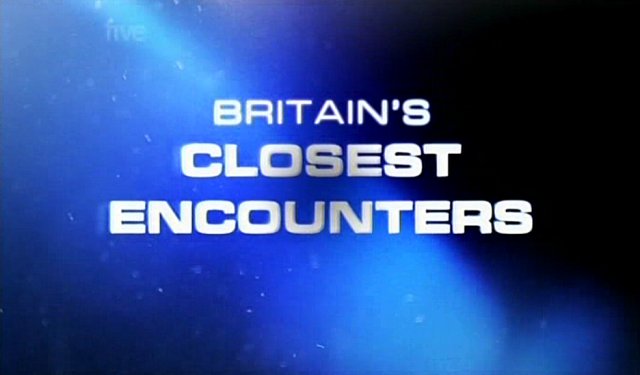
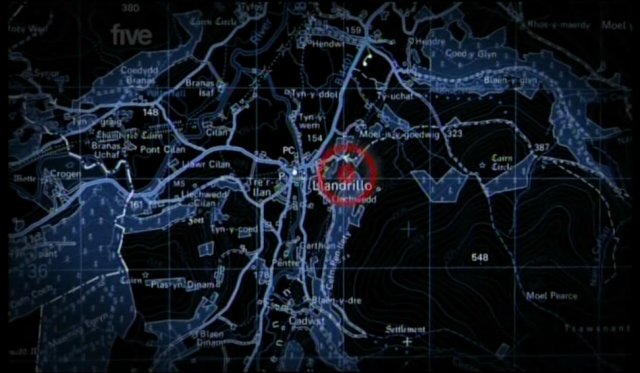
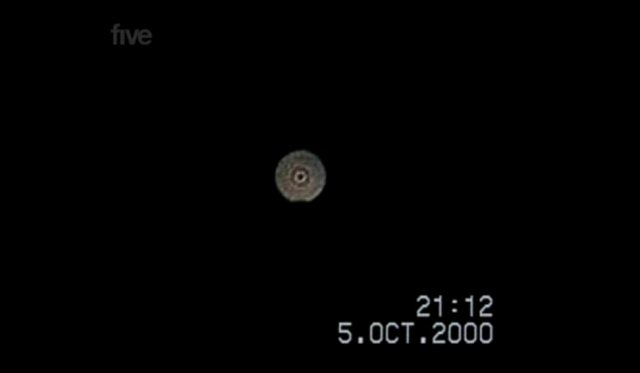
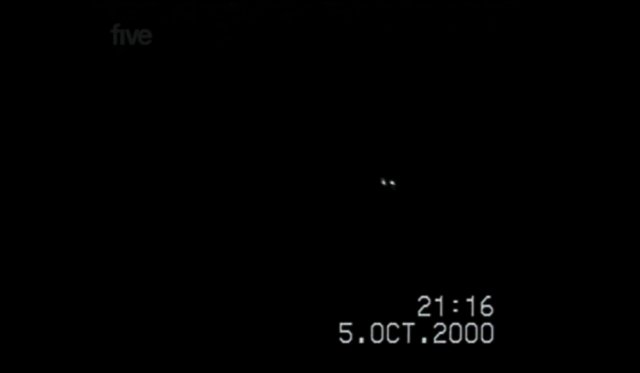
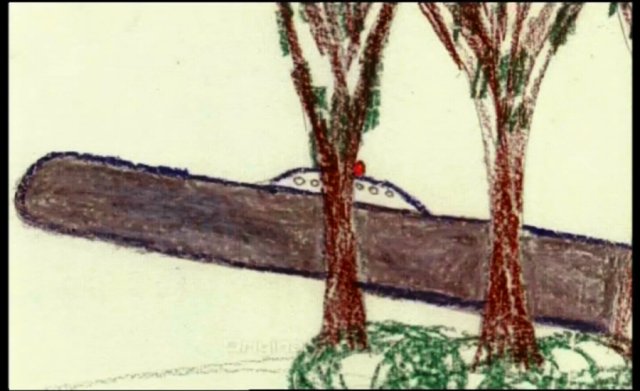
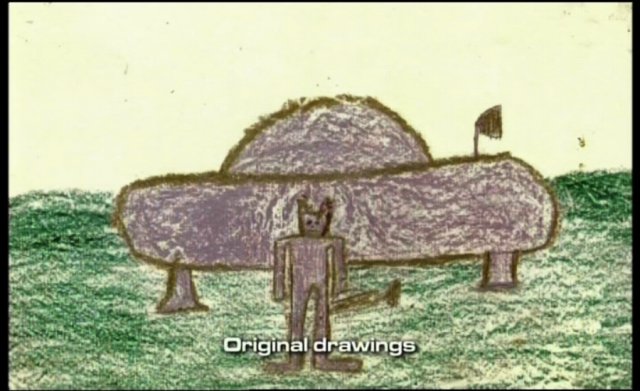
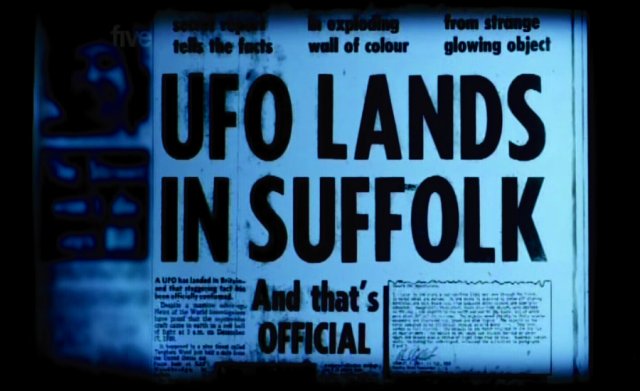 Then there was the big one: The Rendlesham Forest
Incident. We all know this story from 1980 about lights being seen
in the woods between RAF Woodbridge and RAF Bentwaters and
Lieutenant Colonel Charles Halt’s venture through trees, recording
the audio as he went and the subsequent memo. Nick Pope thinks it’s
a supremely important case, while Ian Ridpath thinks it was Orford
Ness lighthouse. Pope disagrees, saying that in no way could the
lighthouse be mistaken for anything else. Ridpath countered with an
explanation consisting of a meteoric fireball. “If it was nothing
more than a lighthouse and a fireball, why were the base personnel
not allowed to talk about it?” asked Anthony Head.
Then there was the big one: The Rendlesham Forest
Incident. We all know this story from 1980 about lights being seen
in the woods between RAF Woodbridge and RAF Bentwaters and
Lieutenant Colonel Charles Halt’s venture through trees, recording
the audio as he went and the subsequent memo. Nick Pope thinks it’s
a supremely important case, while Ian Ridpath thinks it was Orford
Ness lighthouse. Pope disagrees, saying that in no way could the
lighthouse be mistaken for anything else. Ridpath countered with an
explanation consisting of a meteoric fireball. “If it was nothing
more than a lighthouse and a fireball, why were the base personnel
not allowed to talk about it?” asked Anthony Head.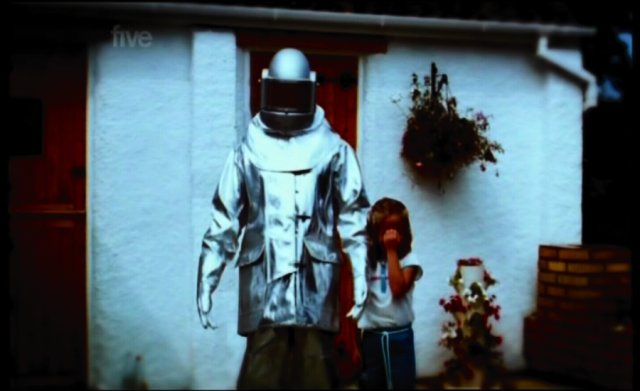
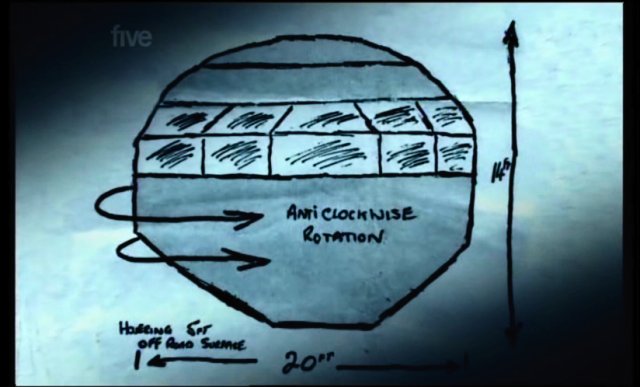
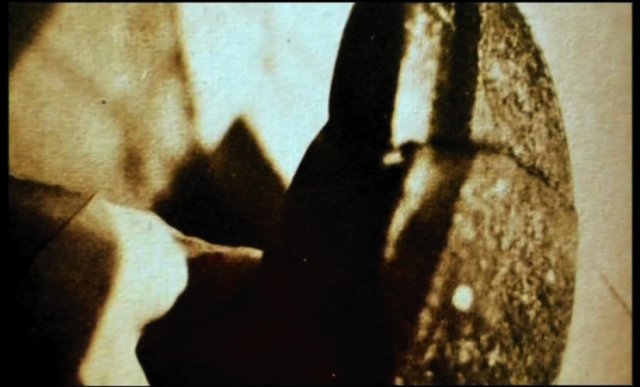

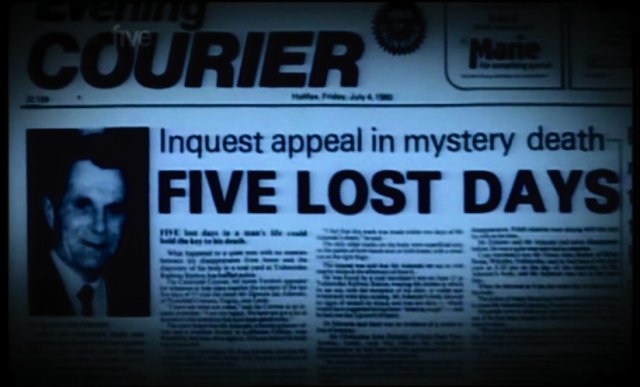
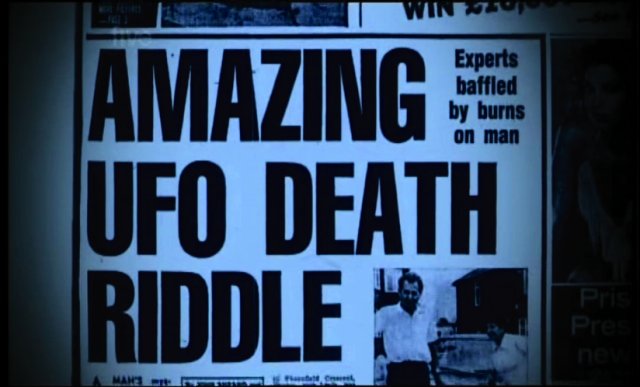 John Sheard, a reporter for the
Sunday Mirror, wrote an
article about the Adamski case and it made the front page with the
headline: AMAZING UFO DEATH RIDDLE. The article resulted in the
newspaper being deluged with thousands of letters and hundreds of
phone calls from interested parties across the world. John also
wrote about Alan Godfrey’s experience, saying that individually, the
stories are fascinating, but together, with the possible
connections, they are ‘dynamite’.
John Sheard, a reporter for the
Sunday Mirror, wrote an
article about the Adamski case and it made the front page with the
headline: AMAZING UFO DEATH RIDDLE. The article resulted in the
newspaper being deluged with thousands of letters and hundreds of
phone calls from interested parties across the world. John also
wrote about Alan Godfrey’s experience, saying that individually, the
stories are fascinating, but together, with the possible
connections, they are ‘dynamite’.